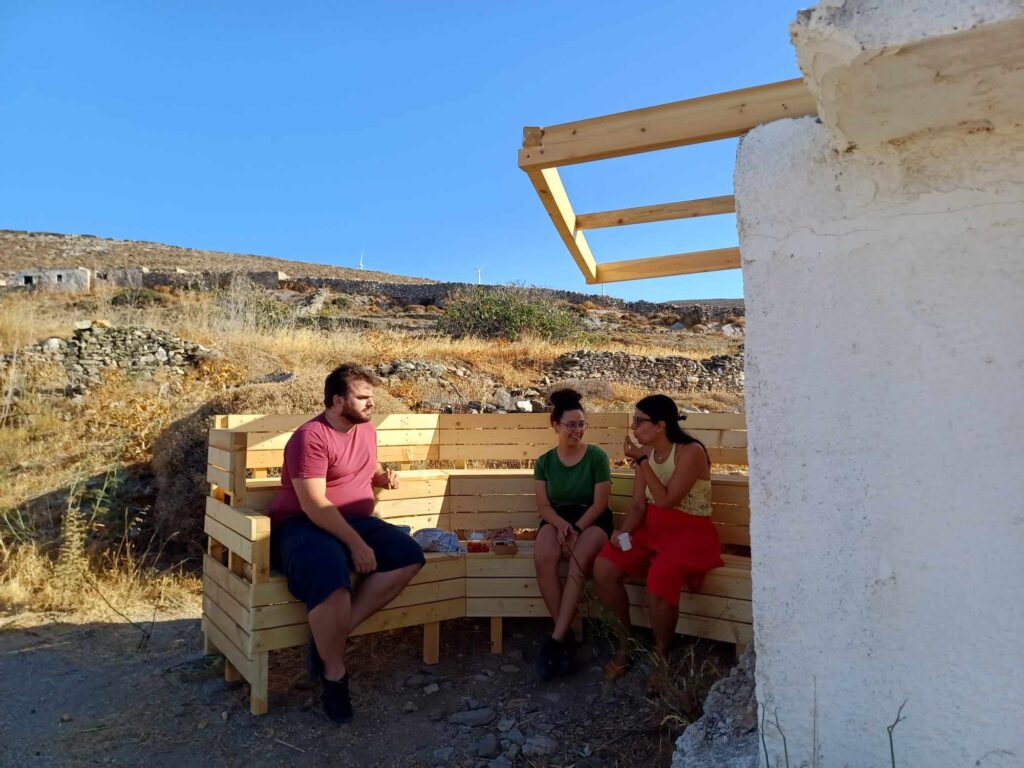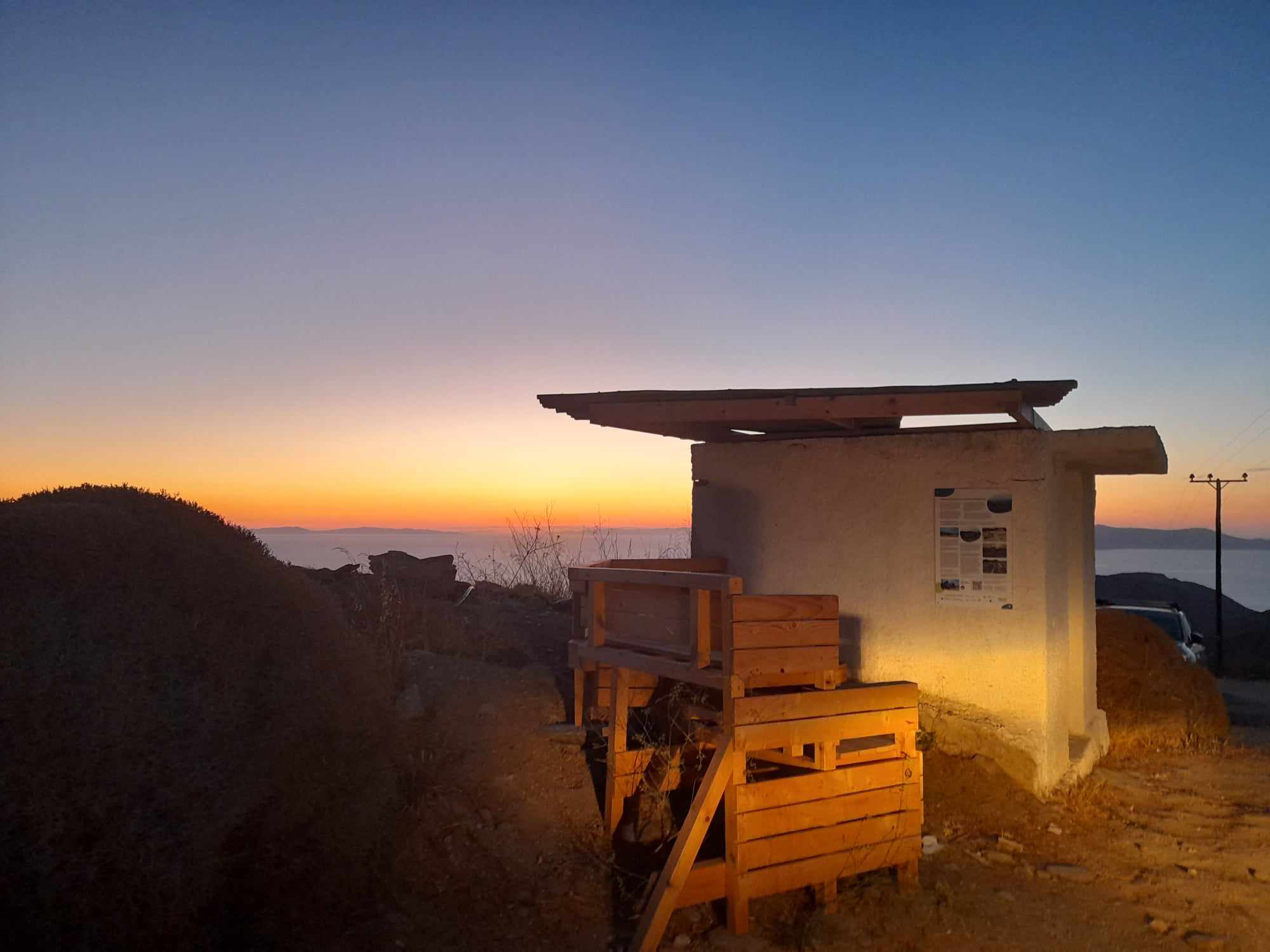On a sunny afternoon in late July 2024, our team gathered at a newly established wooden bench next to a remote bus stop in Apano Meria, a place that had recently undergone a creative intervention aimed at enhancing public space and fostering community engagement. This initiative sought to transform the bus stop into a vibrant point of interaction between residents, visitors, and more-than-human inhabitants, creating a platform for shared activities, thereby strengthening (multispecies) community ties.


The project was developed as part of an effort to promote sustainability and community interaction in the area. Recognizing the bus stop’s potential as a hub for social and environmental awareness, our team created a series of tools to measure the intervention’s impact. One of the primary tools employed was an online form accessible via a QR code, allowing visitors to catalogue the flora and fauna they encountered during their visit. This tool aimed to gather data on the recognition of local species and assess the overall sentiment towards the intervention.
During the event, participants scanned the QR code to access the online form, where they could identify various plants and animals they observed. The form included questions about specific species, as well as a section for uploading photos and sharing their feelings about the space. The participatory design approach encouraged community members to engage actively, fostering a sense of ownership and pride in the newly transformed bus stop.

Overall, the online feedback tool proved to be a success. Participants enthusiastically recognized numerous plant species, including Fennel and Sage, demonstrating a high level of engagement with their natural surroundings. The tool facilitated a direct and immediate connection between visitors and the environment, promoting awareness of local biodiversity.
One of the most significant findings was that 100% of participants recognized Fennel, while Sarcopoterium (or Spiny broom) also achieved a 100% recognition rate. These results indicate a strong familiarity among community members with these plants, suggesting a potential interest in incorporating educational activities related to local flora in future events.
Despite its successes, the tool did face some challenges. Feedback indicated that the format of the questions could be improved. Participants suggested shifting from separate questions to a multiple-choice format to enhance ease of use and encourage more responses. This change in format is reflected in the form now available at the information panel on the wall outside the bus stop. Additionally, limited internet access in the area posed a challenge for some participants, highlighting the need for alternative methods of engagement in future initiatives.

The creative intervention at the Apano Meria bus stop marks a significant step towards revitalising public spaces and fostering community engagement. By using participatory tools to measure impact, we are not only gaining valuable insights into the local environment but also empowering residents to connect with their surroundings. As we move forward, these findings will guide us in refining our approach and enhancing future community initiatives.
